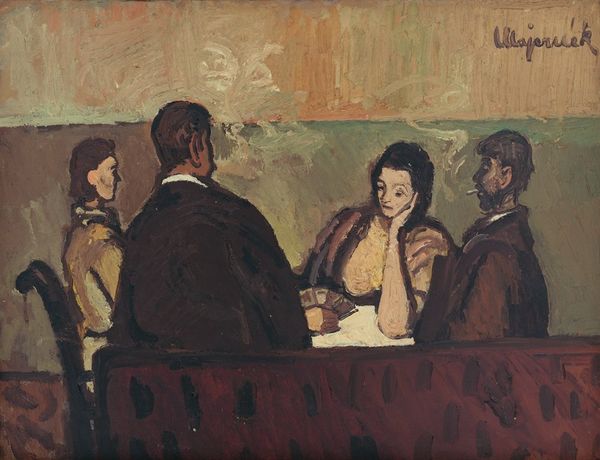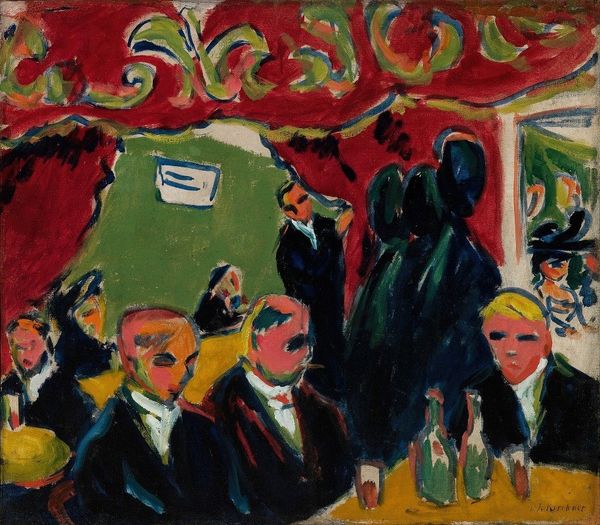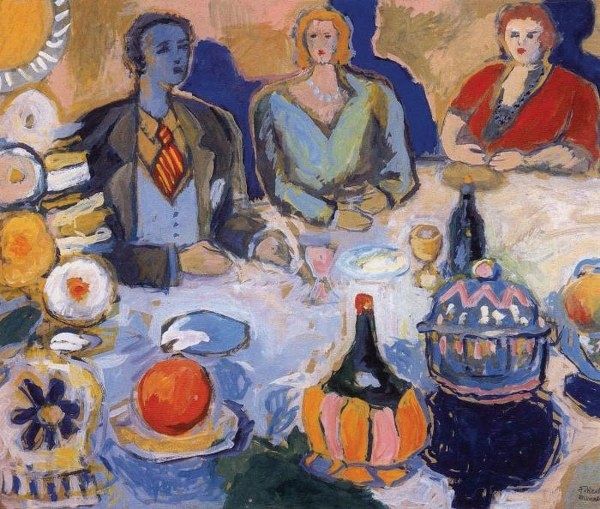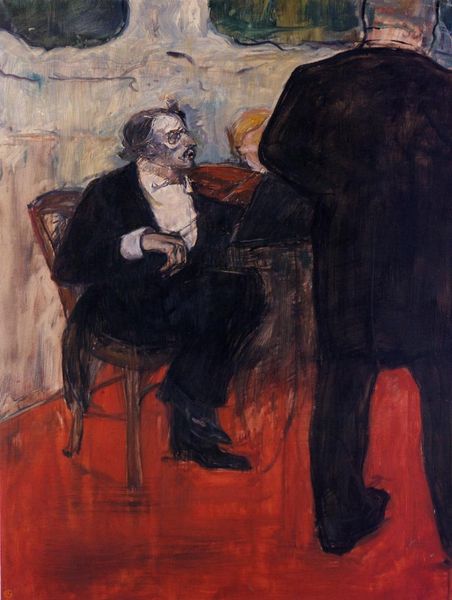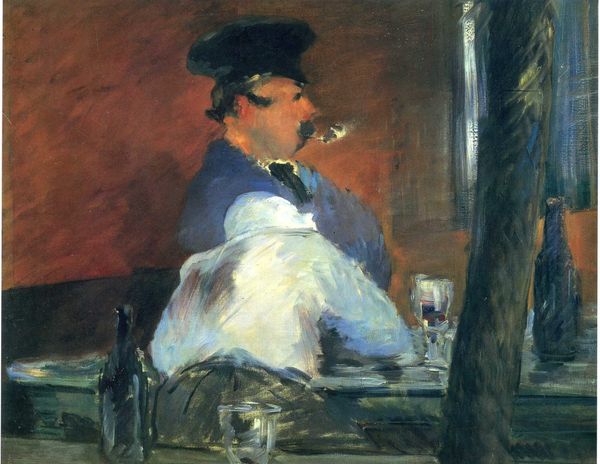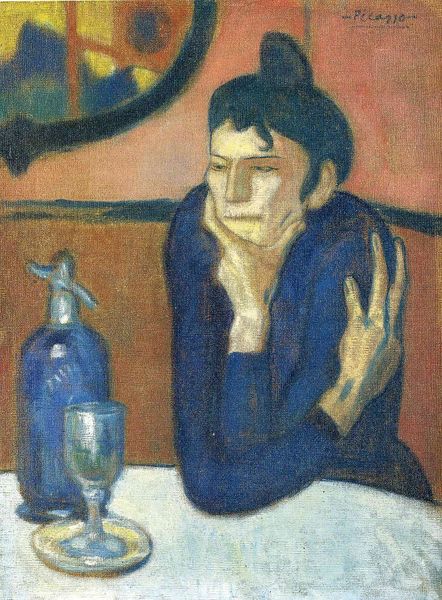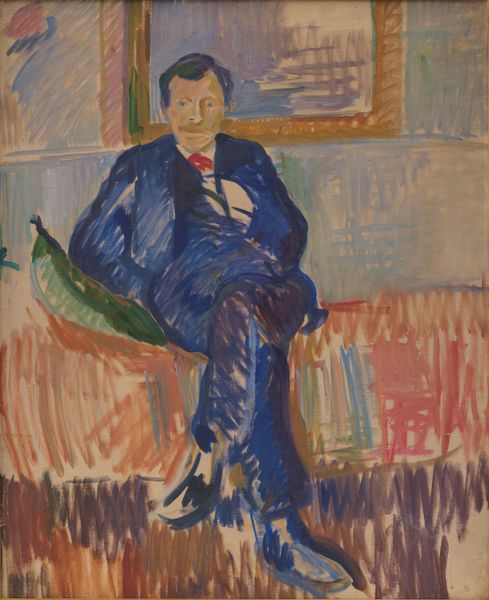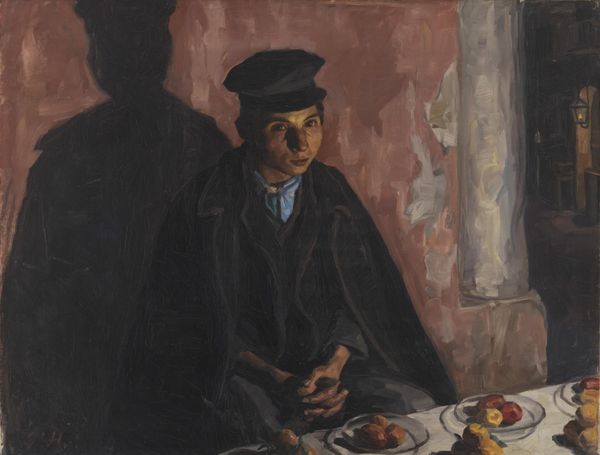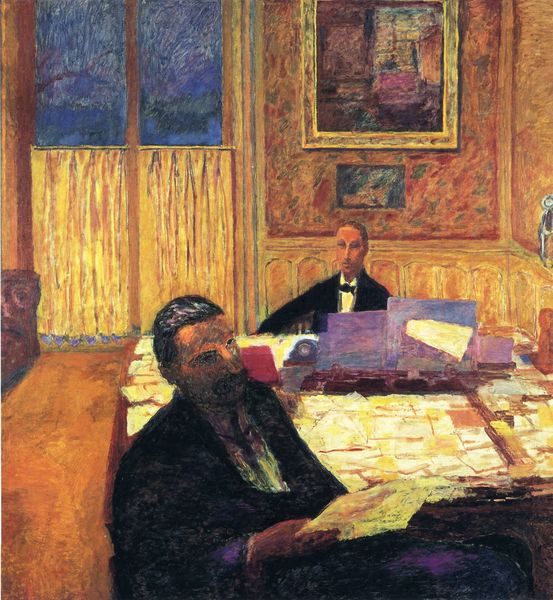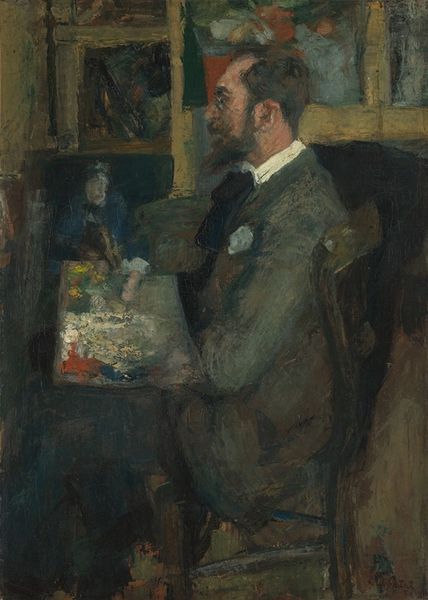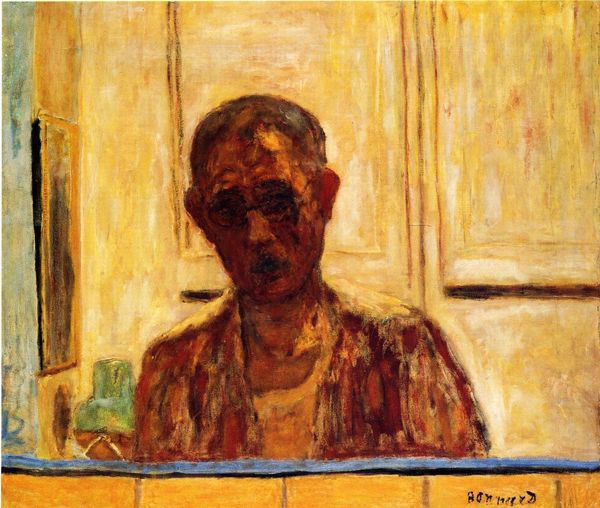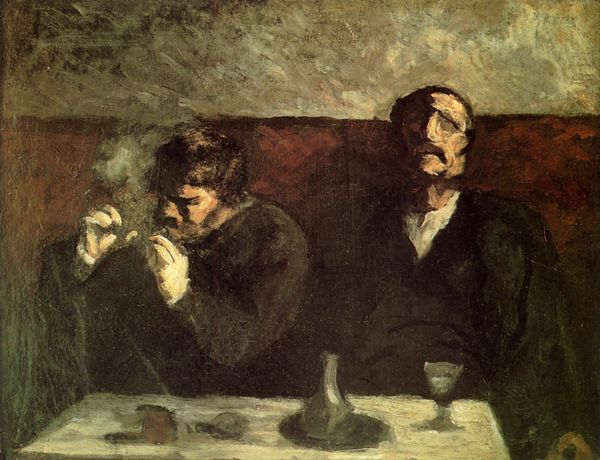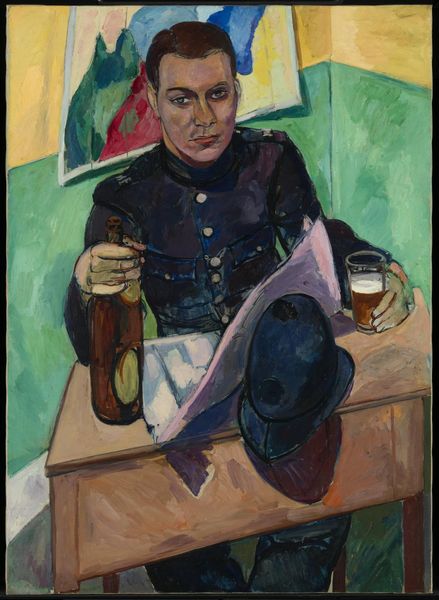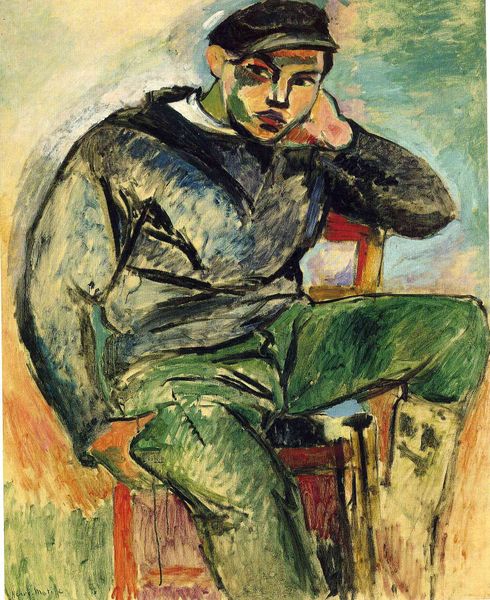
Dimensions: 110.5 x 120.5 cm
Copyright: Public domain
Curator: This is Edvard Munch's "Self-portrait with Bottle of Wine," painted in 1906. It's quite striking. Editor: It is. The first thing that grabs me is the raw intensity. You can practically feel the weight of his gaze, the melancholic aura almost palpable in the brushstrokes and somber hues. Curator: Absolutely. Let's delve into the materiality for a moment. Notice the heavy application of oil paint. It gives a tangible, almost sculptural quality, drawing our eye to the sheer physicality of its production. I am curious about the commercial sources he would have turned to, from the fabric he painted on to the source of his pigments, to the brand of bottle beside the solitary wine glass, indicating themes of alienation from community and the self in the setting of modernity. Editor: True, the thickness adds a layer of complexity to the mood, underscoring that psychological weight. Considering this was created in the wake of a severe nervous breakdown, we see the piece situated within broader cultural dialogues surrounding mental health and artistic expression. Munch frequently grappled with themes of trauma and mortality throughout his career, but here we see him facing these internal battles head on, staging his experience. Curator: Interesting, but is it all autobiographical, or is it a highly staged production by Munch? There is evidence, for example, of Munch producing his own canvas; what were his production strategies? The surface is rather unique. Editor: That's where the beauty lies: the piece invites these open ended reflections on authorship. Think about the looming figures in the background—are they specters of societal judgment or perhaps internal manifestations of Munch’s anxieties? Also, look at the table! The crispness of its white tablecloth juxtaposed against the turbulent brushstrokes feels significant, doesn’t it? Perhaps it symbolizes society's sterile façade of order contrasting sharply with the messy realities of human experience. Curator: Yes, and I find the industrial sources of these starkly contrasting material applications and colours telling. One could really analyse Munch’s supply chains and the vendors, his producers. How far away from his home did he source his raw goods? Were they commercial vendors? Did he grind his own paint? What labour practices sustained him and were these equitable for those lower on the rung? Editor: Such inquiries open avenues into the conditions that enabled the making of such work! Considering how such a raw, personal piece intertwines with systems of creation further complicates our reading of mental health and creativity during a pivotal time in history. Curator: Agreed. What a potent illustration of his internal battles. Editor: Indeed. This self-portrait isn't just about an individual but prompts inquiries of our society at large, inviting conversations we’re still very much having today.
Comments
No comments
Be the first to comment and join the conversation on the ultimate creative platform.
